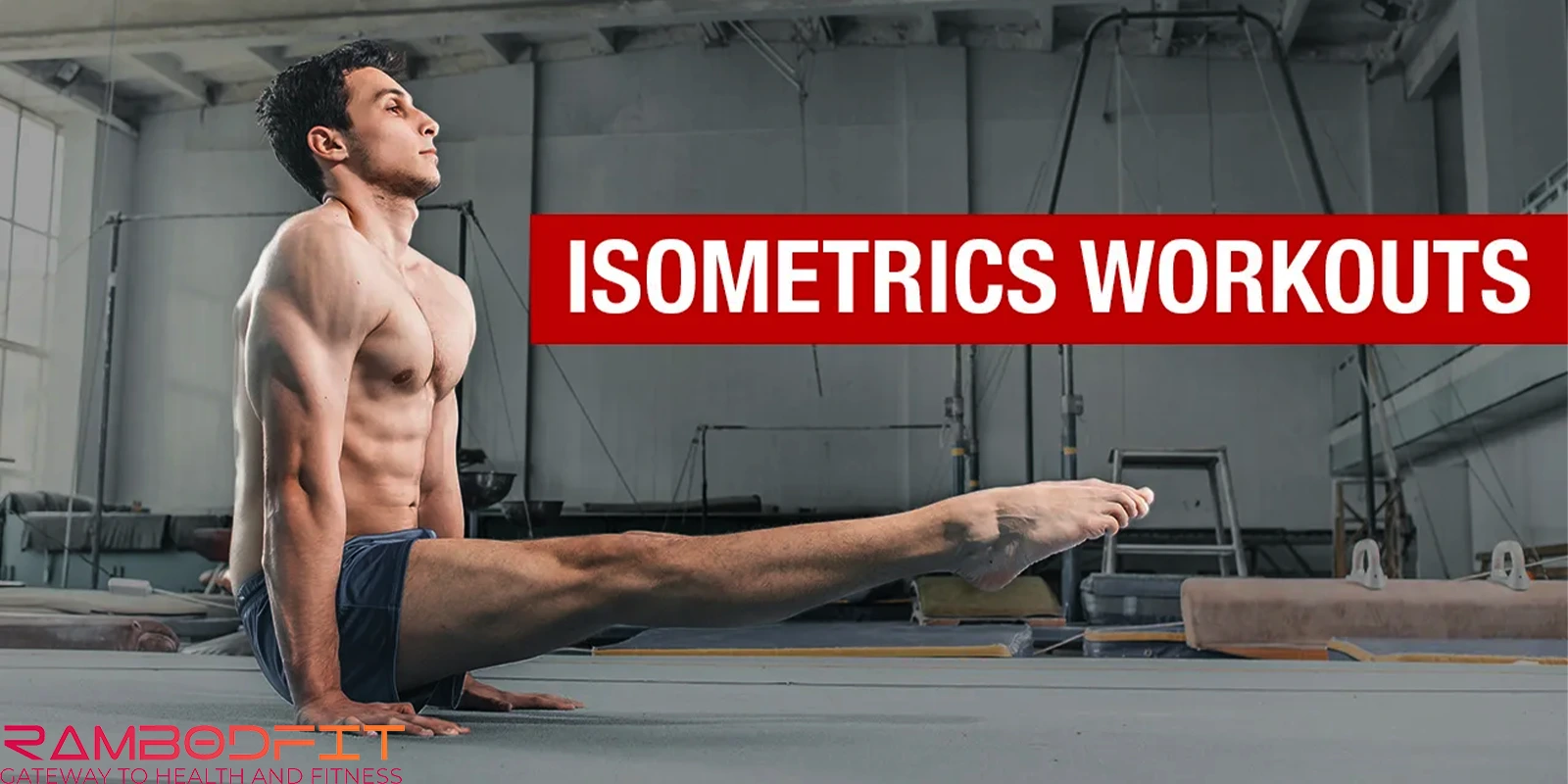


At first, yeah, it sounds kinda ridiculous—like, you walk into the gym, grab a dumbbell, and then… just freeze. You’re not curling it. You’re not pressing it. You’re literally just standing there, gripping the thing and locking your muscles tight, but not moving an inch. People nearby probably side-eye you, maybe snicker to their friend, “Uh, is this guy lost or…?” That’s the funny part, because isometric strength training benefits actually kick in exactly when you’re just holding still like that.
But plot twist: the joke might actually be on them. Turns out, there’s a legit pile of scientific studies building up behind this whole “standing still and flexing for dear life” thing. Apparently, these isometric contractions—yep, that’s the fancy term for holding your muscles under tension without doing any reps—can be shockingly effective for muscle growth. In some cases, they even go toe-to-toe with those classic, move-through-the-whole-range-of-motion lifts, which makes isometric strength training benefits even harder to ignore.
So, over here at Rambodfit, we’re gonna break it all down: what the heck is an isometric? How do these “don’t move a muscle” moves stack up against regular lifting? And seriously, can just holding a weight in place really make you bigger and stronger? Stick around, because isometric strength training benefits might change the way you think about standing still in the gym.
Table of Contents

Alright, here’s how this actually goes down: Isometric contraction is basically when your muscle tenses up and works its butt off, but doesn’t budge an inch. Like, the muscle isn’t getting shorter or longer—the fibers are just chillin’, locked in place, actin and myosin gripping on tight like they’re in a tug-of-war and nobody’s winning. That’s where isometric strength training benefits start showing up in ways most people overlook.
Picture this: you’re holding a plank. Your abs, your shoulders, even your thighs… all screaming for mercy, but your body’s not moving a smidge. That’s isometric. It’s like flexing and freezing in place, and isometric strength training benefits hit hard in exactly these positions.
Now, that’s totally different from when you’re, say, curling a dumbbell up (that’s concentric, muscle gets shorter), or letting it back down (eccentric, muscle gets longer—y’know, the slow, jelly-arm part). But compared to those, isometric strength training benefits stand out because you’re training stability and raw tension at once.
Here’s the crazy part: you’re pulling off isometric contractions all the time without even knowing it. Hauling grocery bags with your arms locked? Isometric. Clutching your core so you don’t drop a sofa on your foot? Yeah, that counts too. And yep, these daily moves give you little previews of isometric strength training benefits.
So here’s the real kicker: if you actually train like this on purpose—just holding stuff instead of constantly moving—could you build muscle just as well, or maybe even better, than with regular ol’ sets and reps? Now that’s something to chew on, especially with isometric strength training benefits in the spotlight.
Wild study alert: So, these researchers got creative with the ol’ leg extension machine, right? They had folks work out each leg differently—one leg doing that classic move: up, down, repeat (full range stuff). Other leg? Just held the weight in the stretched-out spot, zero moving. Kinda like pausing Netflix, but with pain. And yeah, that’s where isometric strength training benefits sneak in when you least expect it.
Here’s the twist—the stiff-leg, non-moving crew eked out slightly more muscle growth than the ones pumping reps. Yeah, turns out just sitting there suffering actually does something. Who knew? Isometric strength training benefits might be the reason that static suffering paid off.
But hey, let’s chill for a sec before we crown isometric holds as the new muscle wizard. First off, the whole thing lasted like a month and a half. That’s not exactly a long-term commitment, you know? And the “better results” were basically… a hair better. Not night and day, which shows that isometric strength training benefits are promising but not a miracle shortcut.
So, maybe keep repping—just toss a hold in now and then if you’re feeling spicy. That way, you’re getting the best of both worlds while still cashing in on isometric strength training benefits.
So, the real kicker in this study? Folks kept their muscles stretched out, holding ‘em in that long, drawn-out position. And honestly, this isn’t some fluke. There’s a stack of research out there showing that training a muscle while it’s stretched does all kinds of magic for growth, sometimes even beating good ol’ “full range of motion” routines. That’s where isometric strength training benefits really start to shine.
Why does this happen? Well, the big idea floating around is that stretching a muscle while it’s under some serious tension just cranks up the stress on those tiny micro-muscle fibers. More stress equals more muscle signals, which should mean you get swole faster. That’s the theory, anyway, and it lines up nicely with isometric strength training benefits.
But—here’s where most folks mess up—it’s not like every kind of isometric hold is some kind of muscle-building cheat code. Another study checked out bicep holds but in a fully flexed (like, peak curl) position and—surprise—those folks still saw gains. So, it’s not just about stretching things out. It’s all in the way you actually use the technique, and different positions unlock different isometric strength training benefits.
Bottom line? Isometrics can hit different no matter what, but the real gold seems to show up when you’re hanging out in that stretched position. Give it a try if you wanna mix things up, because those isometric strength training benefits might be exactly what your routine is missing.

Here’s the real scoop. Isometric training kinda flies under the radar, but it packs a legit punch: you’re lighting up all sorts of muscle fibers—stuff you didn’t even realize you have sometimes. The gains? Not too shabby either, honestly, right up there with what you get from doing regular, full-range moves. Plus, doing isometrics in that stretched, painful position? There might even be a tiny edge there. Wild how torture sometimes works, and that’s exactly where isometric strength training benefits sneak in.
But—don’t get it twisted—isometrics are the sidekick, not the main hero. Like, don’t build your whole routine out of wall sits and planks. That’s like trying to live off nothing but hot sauce. Amazing on tacos, terrible as a meal. Think of isometric strength training benefits as an extra boost, not the whole show.
Best way to use ’em? Breakin’ through those nasty plateaus that make you want to hurl your dumbbells across the room. Also solid for dialing in that mind-muscle connection so next time, your biceps actually feel like they’re doing something. And if you tack ’em onto the end of a set, you’ll find out exactly how much your muscles hate you (in a good way, promise). That’s another place where isometric strength training benefits prove themselves.
Me? I throw in iso holds at the end of curls and squats. Hurts like hell, but the next session my form is tighter and I feel way more solid. Isometrics aren’t about tossing the basics—just spicing them up. Like hot sauce, but less heartburn, and with all the isometric strength training benefits still tagging along.

Okay, so isometrics—they look kinda weird, right? You’re just standing there, not moving, meanwhile everyone else is repping out curls like they’re auditioning for a fitness infomercial. But honestly? The science says it straight up works. Locking a muscle in place and making it burn? That mess actually packs on size and strength. It’s not just some old-school nonsense, and yep, isometric strength training benefits back it up.
Now, don’t get wild and ditch everything else for wall sits and planks. Isometrics are more like your secret weapon, not your main game plan. Mix ’em in with those big, full-range moves—bench, squats, the classics—and watch yourself get tougher and stronger. That’s when isometric strength training benefits really come alive.
So next time someone side-eyes you for just, like, holding a dumbbell in place, let them laugh. You know the truth: standing still might be the smartest flex in the gym, especially once you realize how strong isometric strength training benefits can be.
No. While isometrics can stimulate muscle growth and strength, they work best as an add-on to your training plan. Full ROM lifts are still essential for mobility, strength, and overall development.
Not necessarily. Stretched isometric holds tend to show stronger hypertrophic benefits in research, but shortened holds can still improve endurance and mind-muscle connection. Both can play a role.
Start by adding 20–45 second holds at the end of a set for one or two exercises. For example, after finishing your leg extensions, hold the weight at the bottom for 30 seconds. Gradually increase as you adapt